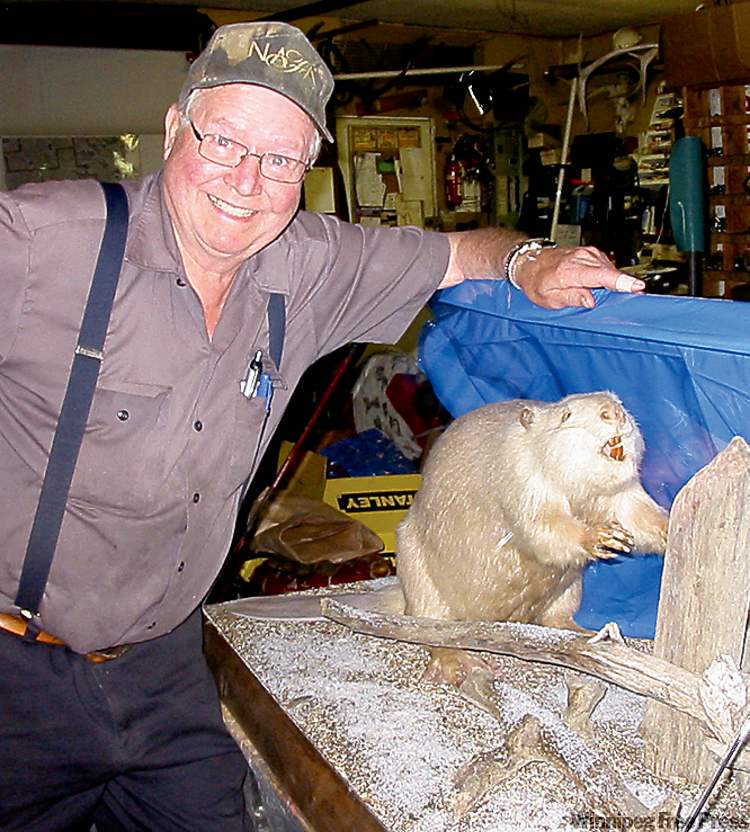Trappers museum welcomes rare ‘pet’ albino beaver
Advertisement
Read this article for free:
or
Already have an account? Log in here »
To continue reading, please subscribe:
Monthly Digital Subscription
$1 per week for 24 weeks*
- Enjoy unlimited reading on winnipegfreepress.com
- Read the E-Edition, our digital replica newspaper
- Access News Break, our award-winning app
- Play interactive puzzles
*Billed as $4.00 plus GST every four weeks. After 24 weeks, price increases to the regular rate of $19.00 plus GST every four weeks. Offer available to new and qualified returning subscribers only. Cancel any time.
Monthly Digital Subscription
$4.75/week*
- Enjoy unlimited reading on winnipegfreepress.com
- Read the E-Edition, our digital replica newspaper
- Access News Break, our award-winning app
- Play interactive puzzles
*Billed as $19 plus GST every four weeks. Cancel any time.
To continue reading, please subscribe:
Add Free Press access to your Brandon Sun subscription for only an additional
$1 for the first 4 weeks*
*Your next subscription payment will increase by $1.00 and you will be charged $16.99 plus GST for four weeks. After four weeks, your payment will increase to $23.99 plus GST every four weeks.
Read unlimited articles for free today:
or
Already have an account? Log in here »
Hey there, time traveller!
This article was published 15/07/2011 (5204 days ago), so information in it may no longer be current.
RENNIE — For some people, it will make no difference. The albino beaver is dead. The people responsible are killers of a sort.
The story dates back four or five years ago. John Bartley would cut maple tree boughs behind his Rennie home to feed the amazing family of four albino beavers living in a drainage channel off Highway 307.
“I’d take two or three maple sticks and call them and they would eat them. They love maple. They eat all the bark off them,” he said.

He went almost every night. The white beavers became like pets. He asked fellow trapper, John Rodgers, on whose registered trap line the beavers lived, to hold off trapping there. Rodgers, who is also a conservation officer based in Hadashville, readily agreed.
After all, the odds of an albino beaver are said to be up to one in 400,000. The odds of four kits being albino is beyond human comprehension. “It’s always just one,” said Rodgers.
This went on for about two years. The beavers weren’t causing any problems. Eventually, the beavers grew up and dispersed. Some people believe two were killed for trophies by out-of-country hunters who had a deer stand in the area. However, albino beavers are also easier prey for natural predators because they lack the typical camouflage.
Then Bartley found one of them. Bartley, 77, is an institution in these parts, 130 kilometres east of Winnipeg. He’s been a trapper for 50 years and has repaired cottager boats and motors for just as long.
He trapped 1,300 beavers one year for CN Rail to keep tracks from being flooded. But if he sees a splash in the water while driving, he still stops the truck, gets out and sits for long periods marvelling at nature’s creatures.
That’s how he spotted the four white kits. He initially saw some white on the back of a brown beaver and couldn’t figure it out. He went down to the water and saw the albino kits climbing on their mother’s back.
The mother was brown and the father was black. “They would run up her back and jump off into the water, curl around and get back on again. She was teaching them how to swim.”
Bartley found the lone grownup albino beaver the same way. He spotted a splash in a ditch along Highway 44. He pulled the truck over, walked down to the water, and began imitating a beaver call. It sounds a bit like a pleading kitten. “And this white beaver swam out of the culvert,” he said.
This time, the beaver threatened to flood Highway 44. Most people don’t realize they would never be able to reach their cottage if there wasn’t a beaver-removal program. Bartley traps beavers in the summer for Manitoba Highways. They wanted him to remove the white beaver but he couldn’t do it. “I couldn’t trap it because it was a pet to me,” he said, although he understands it had to be removed. That was last summer.
Bartley phoned the Assiniboine Park Zoo. In the early 1970s, a ranger caught an albino beaver and it lived in the zoo for half a dozen years. This time, the zoo said it didn’t have the facilities, Bartley said. Relocating the beaver was ruled out because other beavers in that territory would kill it.
The beaver was trapped in December, killed instantly in a Conibear-brand trap.
Darren Shipp donated his extraordinary taxidermy skills. Craig Lobson of Winnipeg Pattern and Model Works on Higgins Avenue, a family business dating back to 1910, donated the fibreglass case for the beaver.
On July 9, the magnificent creature went on display for the first time at the Whiteshell Trappers Museum, on Highway 44 just east of Rennie near where it was trapped. The trapper’s museum is only open weekends, and a local trapper is usually on hand to answer questions.
bill.redekop@freepress.mb.ca

